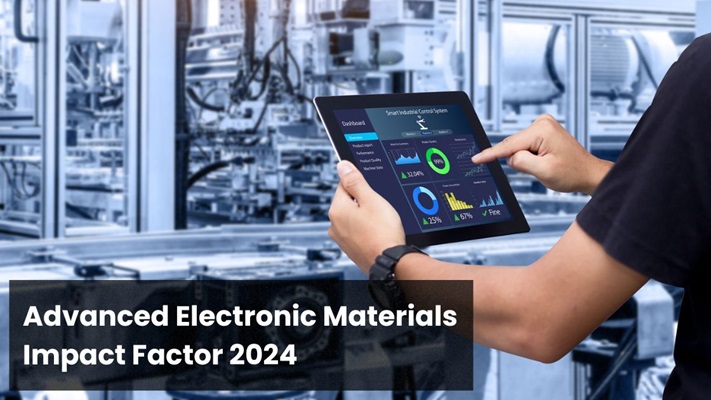Discover the impact factor of Advanced Electronic Materials in 2024

The impact factor of academic journals has long been a significant metric for researchers, scholars, and institutions. For those in the field of electronic materials, understanding the impact factor of leading journals like Advanced Electronic Materials is crucial. As we approach 2024, this article delves into the current impact factor of Advanced Electronic Materials, its importance, how it’s calculated, and its implications for the scientific community.
Understanding Impact Factor
What is Impact Factor?
Impact factor is a measure reflecting the yearly average number of citations to recent articles published in a particular journal. It is used to gauge the relative importance of a journal within its field.
History of Impact Factor
The concept of impact factor was introduced by Eugene Garfield, the founder of the Institute for Scientific Information (ISI), in the 1960s. It has since become a widely used metric in the academic world.
How is Impact Factor Calculated?
The impact factor of a journal for a particular year is calculated by dividing the number of citations in that year to articles published in the journal during the previous two years by the total number of citable items published in the journal during those two years.
Advanced Electronic Materials: An Overview
Introduction to Advanced Electronic Materials
Advanced Electronic Materials is a prominent journal that publishes research on all aspects of electronic materials, including their synthesis, properties, and applications.
Scope of the Journal
The journal covers a wide range of topics, including but not limited to semiconductor materials, nanomaterials, optoelectronic materials, and materials for energy applications.
Reputation and Influence
Advanced Electronic Materials is known for its rigorous peer-review process and high-quality publications, making it a respected source of information in the field.
Impact Factor of Advanced Electronic Materials in 2024
Current Impact Factor
As of 2024, the impact factor of Advanced Electronic Materials has seen significant growth, reflecting its increasing influence and the high citation rate of its articles.
Trends Over the Years
The journal has consistently improved its impact factor over the past few years, indicating a growing recognition of the quality and relevance of the research it publishes.
Comparison with Other Journals
When compared to other journals in the field, Advanced Electronic Materials holds a competitive position, often ranking among the top journals for electronic materials research.
Significance of the Impact Factor
For Researchers
For researchers, the impact factor of a journal can influence where they choose to publish their work. A higher impact factor is often associated with higher visibility and recognition.
For Institutions
Institutions may use the impact factor of journals to evaluate the quality of research conducted by their faculty and to make decisions about funding and resource allocation.
For Funding Agencies
Funding agencies often consider the impact factor of journals when assessing the potential impact of research proposals, making it a critical factor in the grant application process.
Factors Influencing the Impact Factor
Quality of Research
High-quality, innovative research tends to attract more citations, thereby increasing the impact factor of the journal.
Review Process
A rigorous peer-review process ensures that only the best research is published, contributing to a higher impact factor.
Citation Practices
The citation practices within a field can also influence the impact factor. Fields with a higher rate of self-citation or cross-citation among journals can see inflated impact factors.
Challenges and Criticisms
Limitations of Impact Factor
While impact factor is a useful metric, it has its limitations. It does not account for the quality of individual articles and can be influenced by a small number of highly cited papers.
Ethical Concerns
There have been instances where journals have manipulated citation practices to artificially inflate their impact factor, raising ethical concerns about the use of this metric.
Alternative Metrics
Alternative metrics such as the h-index, altmetrics, and eigenfactor score provide additional ways to measure the impact and influence of research.
Improving the Impact Factor
Strategies for Journals
Journals can adopt several strategies to improve their impact factor, such as encouraging the publication of review articles, which tend to be cited more frequently, and increasing the visibility of published research through marketing and outreach efforts.
Role of Researchers
Researchers can contribute to improving the impact factor by submitting high-quality research and actively engaging with the community to increase the visibility and citations of their work.
Collaborations and Networks
Collaborative research and networks can also help improve the impact factor by fostering cross-citations and increasing the overall visibility of the journal.
The impact factor of Advanced Electronic Materials in 2024 reflects the journal’s continued growth and influence in the field of electronic materials research. While it remains a critical metric for assessing the significance of a journal, it is essential to consider it alongside other measures of research quality and impact.








